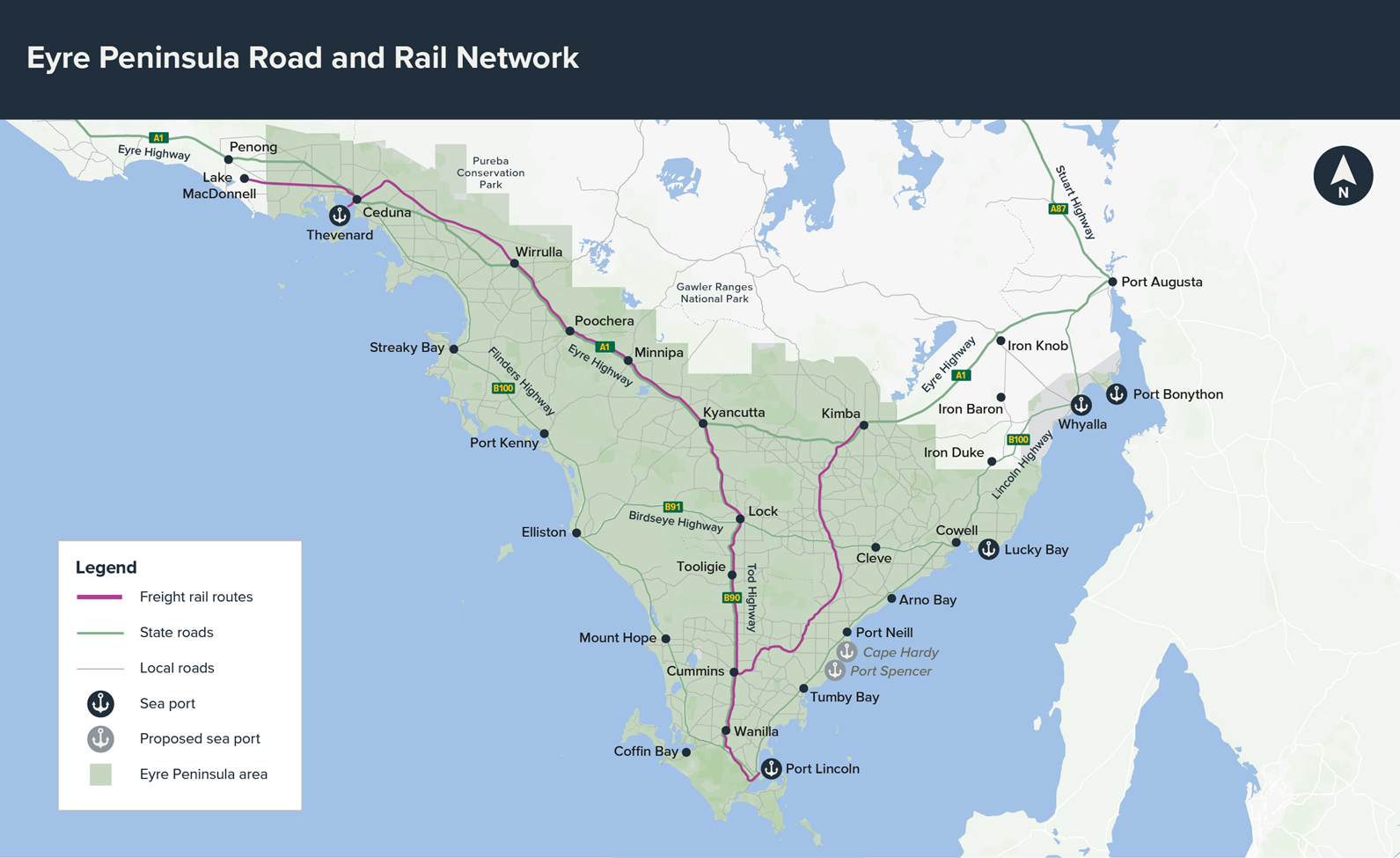Eyre Peninsula Grain Export Supply Chain Planning Study
We are undertaking a planning study to consider options to deliver an optimal and viable export grain supply chain on the Eyre Peninsula. The study will look at all options for future investment and expansion, including road freight and the potential re-opening of the Eyre Peninsula rail network, either in whole or in part. The planning study is jointly funded (75:25) by the South Australian Government and the Eyre Peninsula Local Government Association.
Outcomes of the planning study will be used to develop a business case that identifies options to deliver an optimal grain export supply chain solution, looking at positive outcomes for both growers and communities, including changes and impacts on State and Local Government roads.
Background
Following the restructuring of the export grain industry and the replacement of grower-based commodity traders and bulk grain handlers, there have been a number of proposals for the development of new grain ports in South Australia, particularly on Eyre Peninsula. A new port facility has been established at Lucky Bay near Cowell. While there has been significant activity around the development of two direct loading facilities at Cape Hardy and Port Spencer, both projects have failed to secure investment.
The rail-based supply chain was upgraded in 2006 following a joint Industry, State and Australian Government investment which was supported in part by a grower levy. In 2016 the Eyre Peninsula Freight Study assessed the viability of upgrading the freight network, the study found at that time the rail corridor was no longer commercially viable for grain going forward.
Rail haulage of grain stopped in 2019 and transitioned over to a road-based supply chain, which has put additional pressure on the Eyre Peninsula roads and Port Lincoln itself. Local governments have expressed concerns about the increase in road freight and the impact on the local road networks. New ports planned for lower Eyre Peninsula have also raised concerns due to increased demand on east-west- traffic on largely unsealed local government roads. The potential development of new ports and upgrading road and rail infrastructure are interconnected and are therefore affecting investment decisions relating to bringing commodities, primarily grain, to the export market.
In 2023 Aurizon and Viterra developed a business case for the redevelopment of the rail-based supply chain on Eyre Peninsula, including grain loading and discharge facilities. The business case has been presented to the Australian and South Australian Governments for funding consideration. The business case differs from previous assessments in considering supply chain velocity to optimise grower returns and anticipates increasing the rail grain task to Port Lincoln from around 700,000 tonnes to 1.2 million tonnes per annum.
This business case will identify options to deliver an optimal and viable export grain supply chain on the Eyre Peninsula which is separate to the business case being developed by Aurizon and Viterra, which relates specifically to reactivating rail freight on the Eyre Peninsula. The South Australian Government continues to work with Aurizon and Viterra on their business case.
Planning Study
The proposed outcomes for the planning study will include:
- An optimal and viable export supply chain solution for Eyre Peninsula
- A Business Case for supply chain development on Eyre Peninsula.
The supply chain definition will focus on grain as a commodity, considering grower requirements, including harvest logistics, market and trade related factors and commodity specific issues such as product out-turn quality and segregation related issues. The study will only focus on freight from the point of grower to local storage, with some consideration for product quality issues such as multiple handling.
We will consult with key stakeholders in the supply chain to determine future investments and the impacts of rail on current investments, including those not linked to rail.
Project Timing
It is expected that the Business Case will be finalised by late 2025.
More Information
For more information or to subscribe for project updates please:
- Subscribe to project updates
- Email – DIT.Engagement@sa.gov.au
- Phone – 1300 794 880
